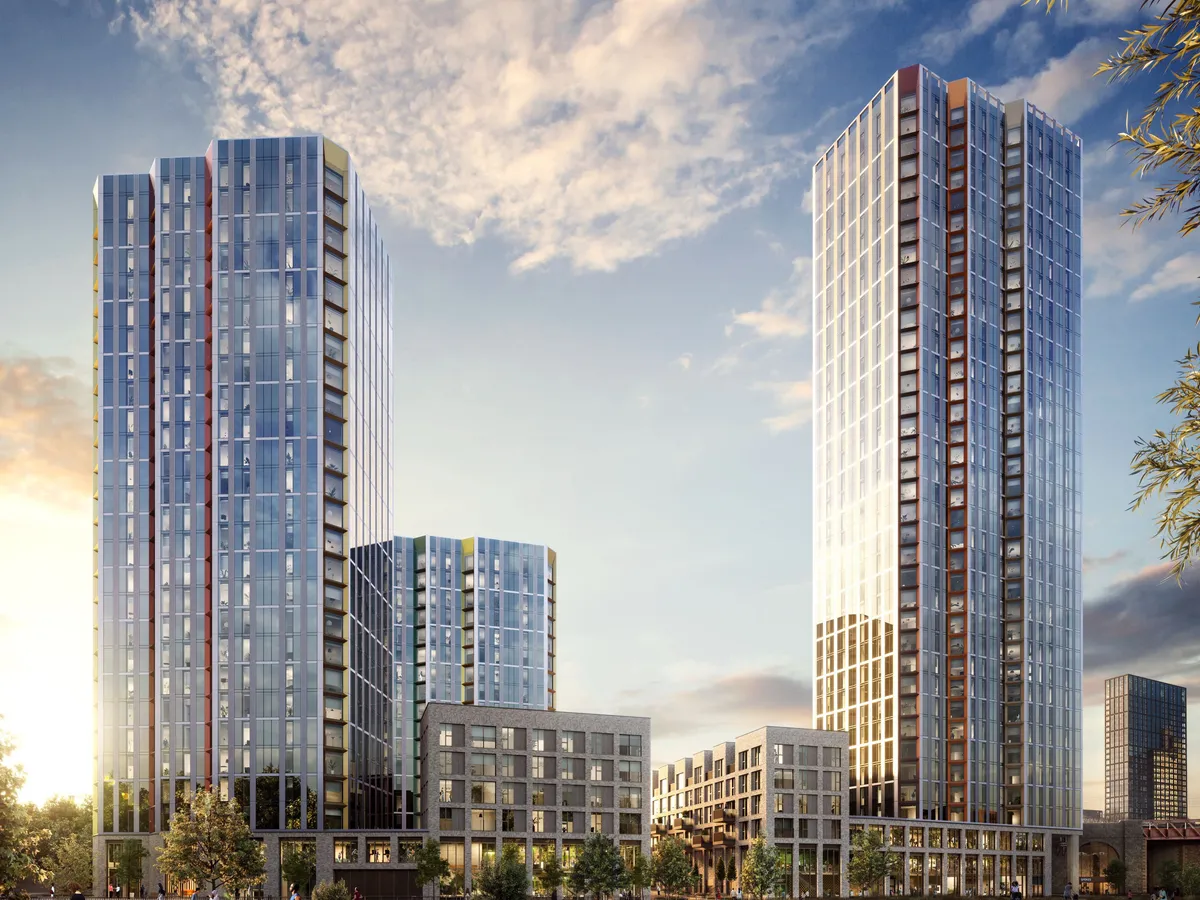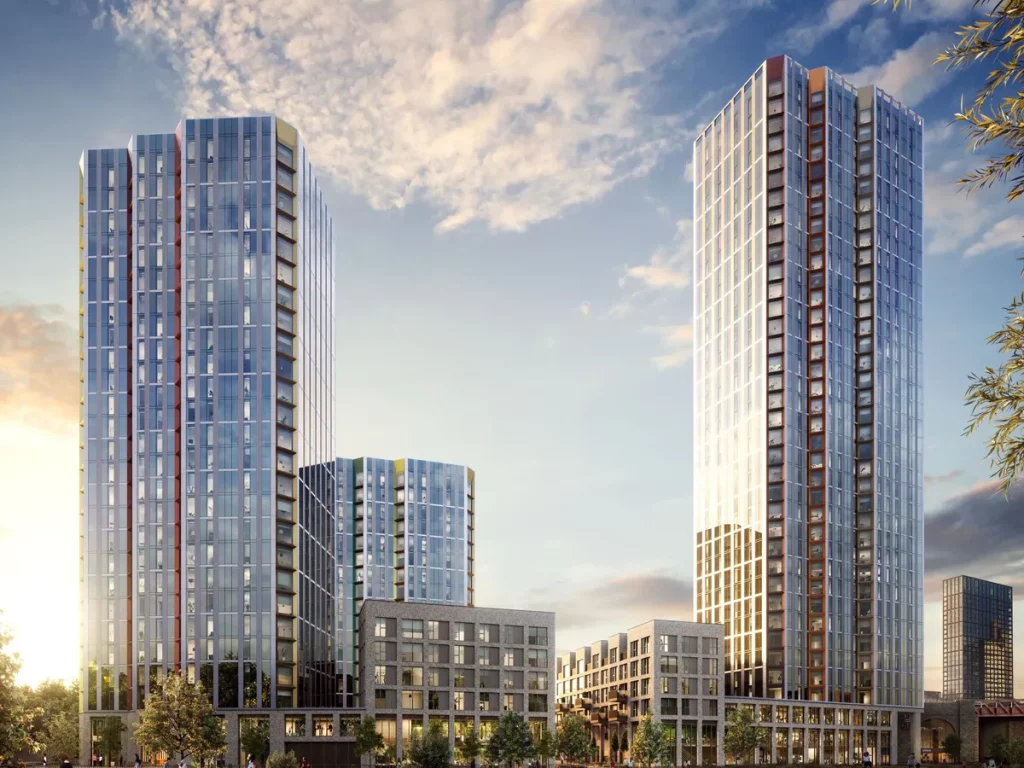
Credit: Red Bank Riverside
Save
Manchester is no stranger to huge developments, and with skyscrapers and modern living spaces popping up in the likes of Deansgate Square and the Northern Quarter, we can easily get sick of them. Now though, a particularly exciting redevelopment project is rearing its head in the Red Bank area of the city, and with such deep and complex roots in the history of Manchester, there’s a lot to unpack.
Red Bank has been at the heart of plenty of new openings in the past few years, yet many are still not on board with it – or even know where it is, for that matter. Renowned for its history as a slum and the location for vagrancy and brutal crimes, there seems to be no equal for the mammoth task of redeveloping Red Bank, and so we’ve looked deep into it, and what the past, present and future of Red Bank really means for Manchester.
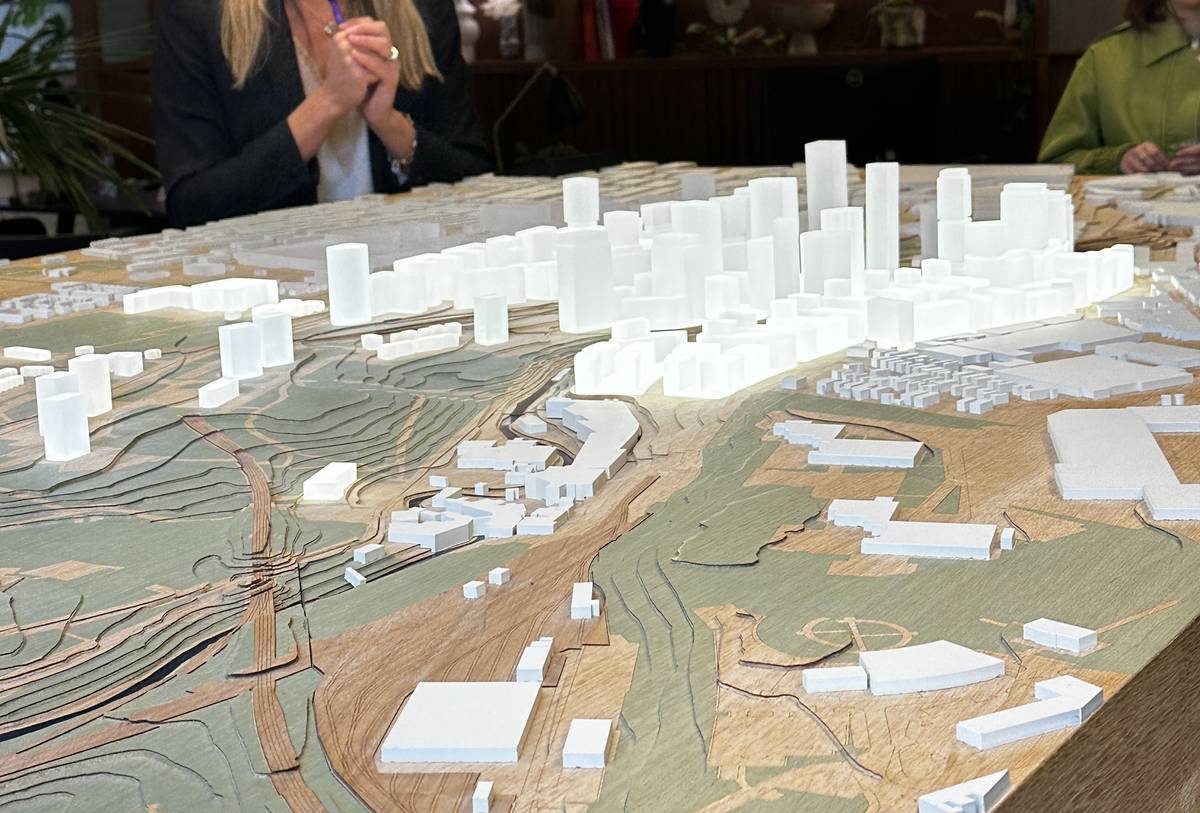 Credit: Emmeline Banks/Secret Manchester Where is Red Bank?
Credit: Emmeline Banks/Secret Manchester Where is Red Bank?
Red Bank is the area of Manchester nestled behind Victoria Station. It is part of the Victoria North regeneration project, and neighbours the likes of Strangeways, Cheetham Hill, Collyhurst and Angel Meadow.
Discover Red Bank on the map below: The role of Red Bank in the building of Manchester
Historically, Red Bank has been a pretty turbulent area of the city. The name comes from the area’s defining geological feature: a hill of red sandstone that forms a steep bank along the River Irk. For centuries, this sandstone was quarried and used to construct some of Manchester’s most foundational landmarks, including the Roman fort at Castlefield and, most significantly, formed the building blocks of the original Collegiate Church, which would one day become Manchester Cathedral.
In the latter half of the 18th century, Red Bank and the adjacent area of Angel Meadow were still semi-rural, even desirable, home to merchants and artisans who enjoyed the proximity to the growing town – but the dawn of the Industrial Revolution changed everything. Drawn by the power of the fast-flowing River Irk, factories, mills, and dye-works swarmed the valley, transforming the landscape into a densely packed, smoke-belching industrial zone.
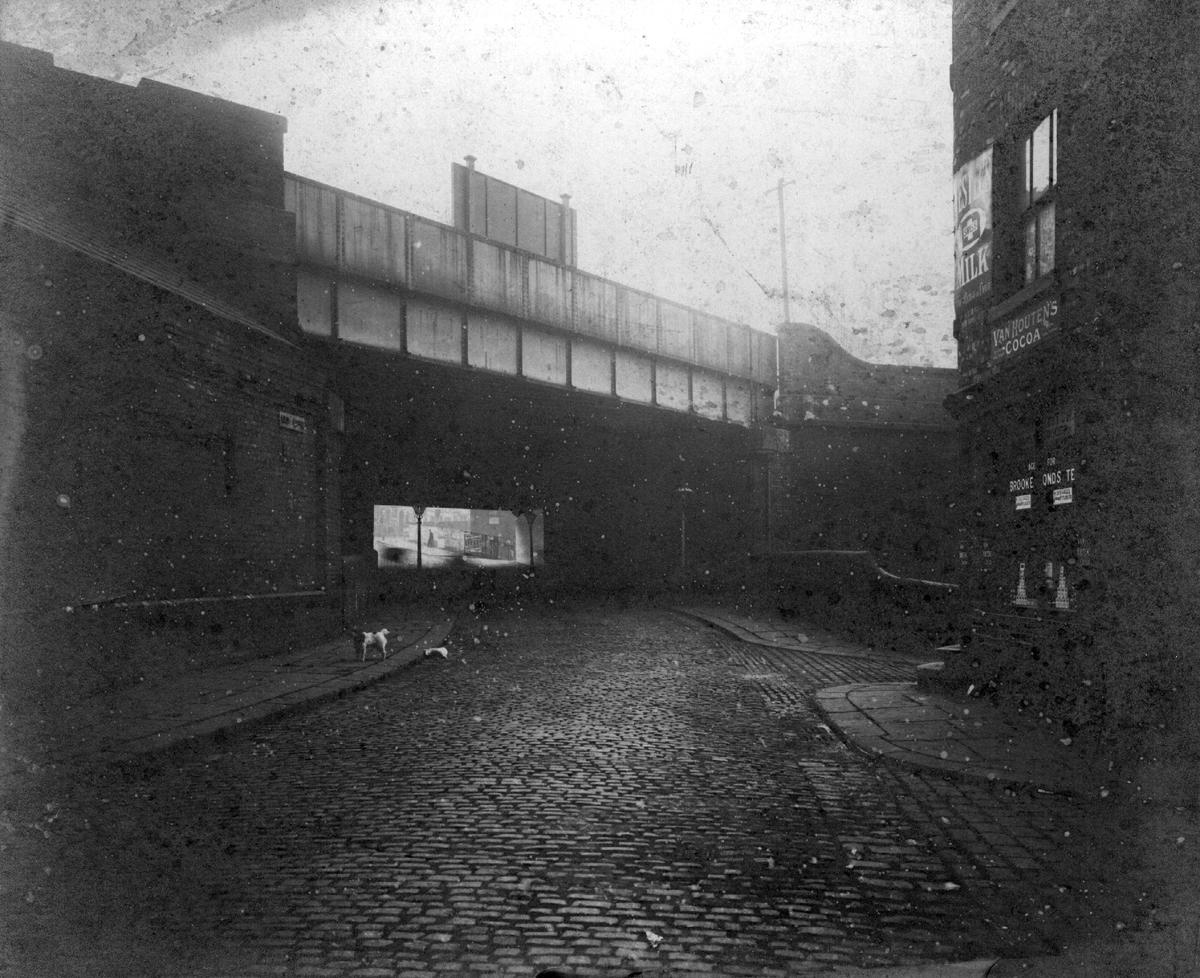 Red Bank, Lancashire & Yorkshire Railway Bridge, South east elevation, 1909 | Credit: Manchester Libraries under Creative Commons/ CC BY-NC-SA 4.0 Red Bank, Angel Meadow & Friedrich Engels
Red Bank, Lancashire & Yorkshire Railway Bridge, South east elevation, 1909 | Credit: Manchester Libraries under Creative Commons/ CC BY-NC-SA 4.0 Red Bank, Angel Meadow & Friedrich Engels
The fate of the area was sealed by the development of Angel Meadow, which was part of the same sprawling slum. Its ironic name came from its proximity to St. Michael and All Angels’ Church – the true “death knell” for the district was the establishment of a paupers’ cemetery next to the church in 1787. Within just 30 years, it became a mass grave, crammed with the bodies of an estimated 40,000 of the city’s poor.
To truly understand the horror of Red Bank and Angel Meadow, we should walk its streets with its most famous and unflinching chronicler, Friedrich Engels. During his stay in Manchester from 1842 to 1844, the young German philosopher – famed for his partnership with Karl Marx – observed the area in meticulous detail, publishing his findings in the seminal 1845 book, The Condition of the Working Class in England.
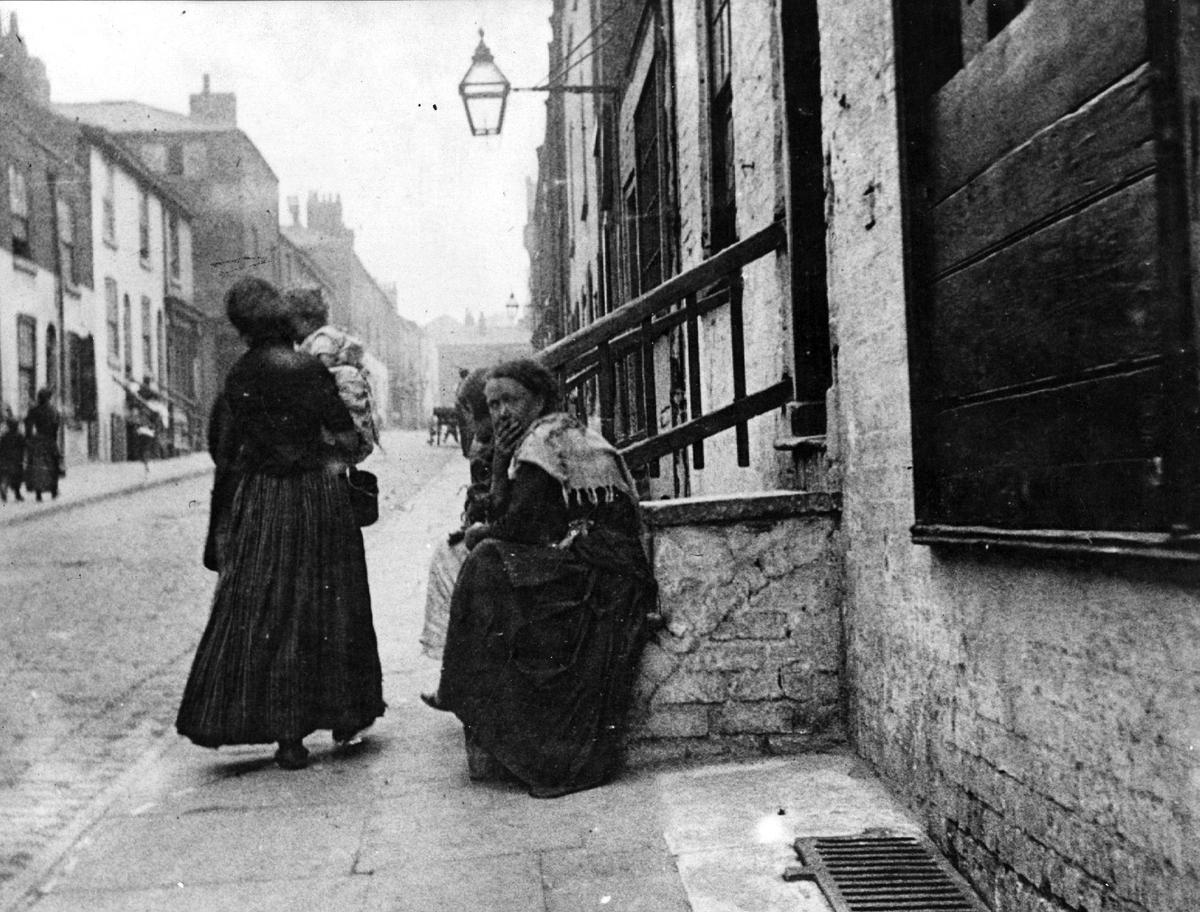 Angel Street, 1892 | Credit: Manchester Libraries under Creative Commons/CC BY-NC-SA 4.0
Angel Street, 1892 | Credit: Manchester Libraries under Creative Commons/CC BY-NC-SA 4.0
Engels described the housing as a “chaotic group of little, one-storied, one-roomed cabins,” many with nothing but earth floors. In these tiny, squalid holes, “working, living and sleeping all take place in the one room“. He documented cellars built directly on the river quay, their floors two feet below the Irk’s low-water mark, rendering them “utterly uninhabitable” yet still rented out to desperate families.
Slums, immigrants & community in Red Bank
The human cost of these conditions was catastrophic. A report from 1877 shows the death rate in the city stood at a staggering 27.79%. To put that in perspective, the death rate in Whitechapel during the year of Jack the Ripper’s murders was 21.8 per 1,000 people; in Angel Meadow, it was 31.9, the worst in England – the main killers being lung diseases, whooping cough, and water-borne illnesses like typhus and typhoid.
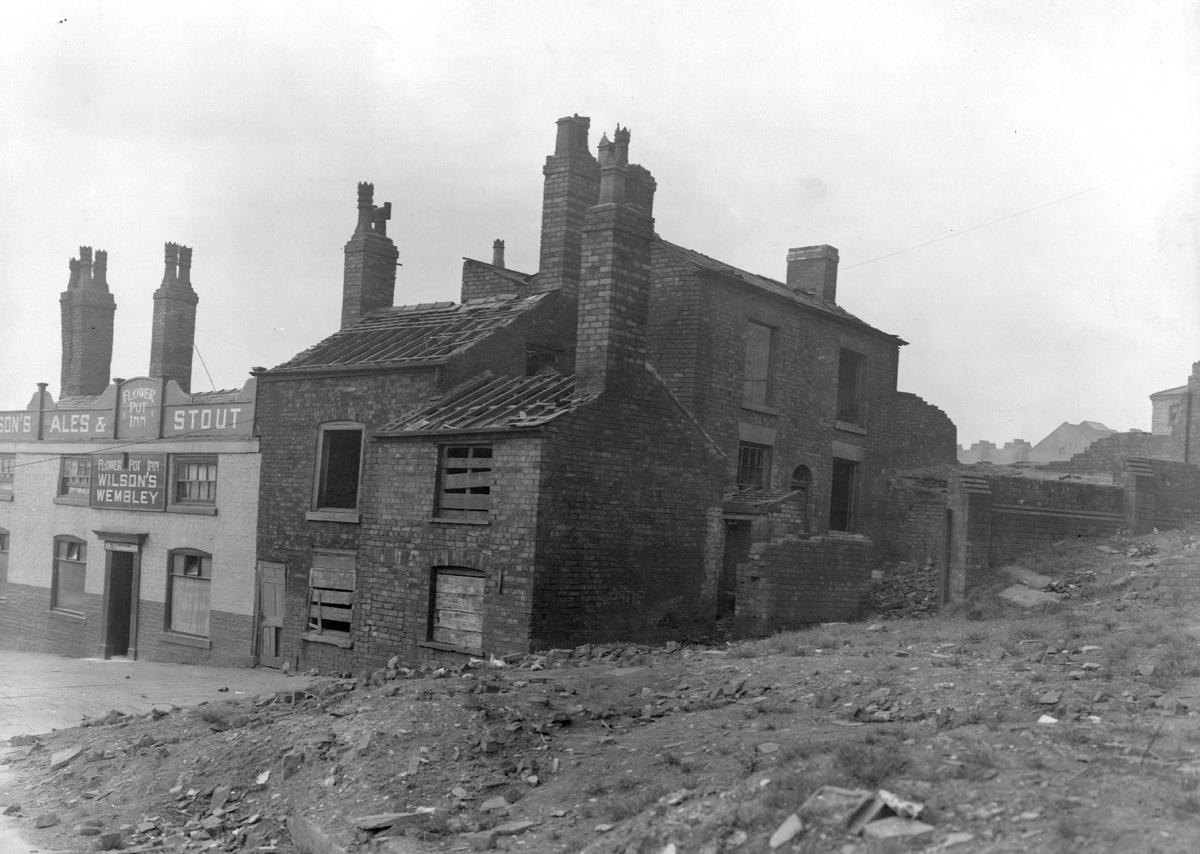 Strangeways, Slum clearance, 75-75a Red Bank, 1937 | Credit: Manchester Libraries under Creative Commons/CC BY-NC-SA 4.0
Strangeways, Slum clearance, 75-75a Red Bank, 1937 | Credit: Manchester Libraries under Creative Commons/CC BY-NC-SA 4.0
From the mid-19th century, Red Bank became the vibrant, chaotic heart of Manchester’s working class Jewish community – mostly immigrants fleeing persecution. As Jewish families began to prosper and move northwards towards the end of the 19th century, around 100 Ukrainian families settled in the area, often finding work in the very tailoring shops their Jewish predecessors had established – a stark example of immigrant succession where one community inadvertently laid the economic groundwork for the next.
Whatever you say about Red Bank, it has quite clearly always been built on, and held together by, strong community. This is what the development of the area sets out to continue in the coming two decades.
Present day Red Bank
Red Bank has been on an upward trajectory for a few years now, and it is home to some of the city’s most popular venues and businesses. The likes of GRUB, Fairfield Social Club, Cultplex, wellness facility Kontrast, and Michelin Guide-worthy restaurant The Spärrows have all called the area home in the past few years, which has seen an increase in footfall through Red Bank.
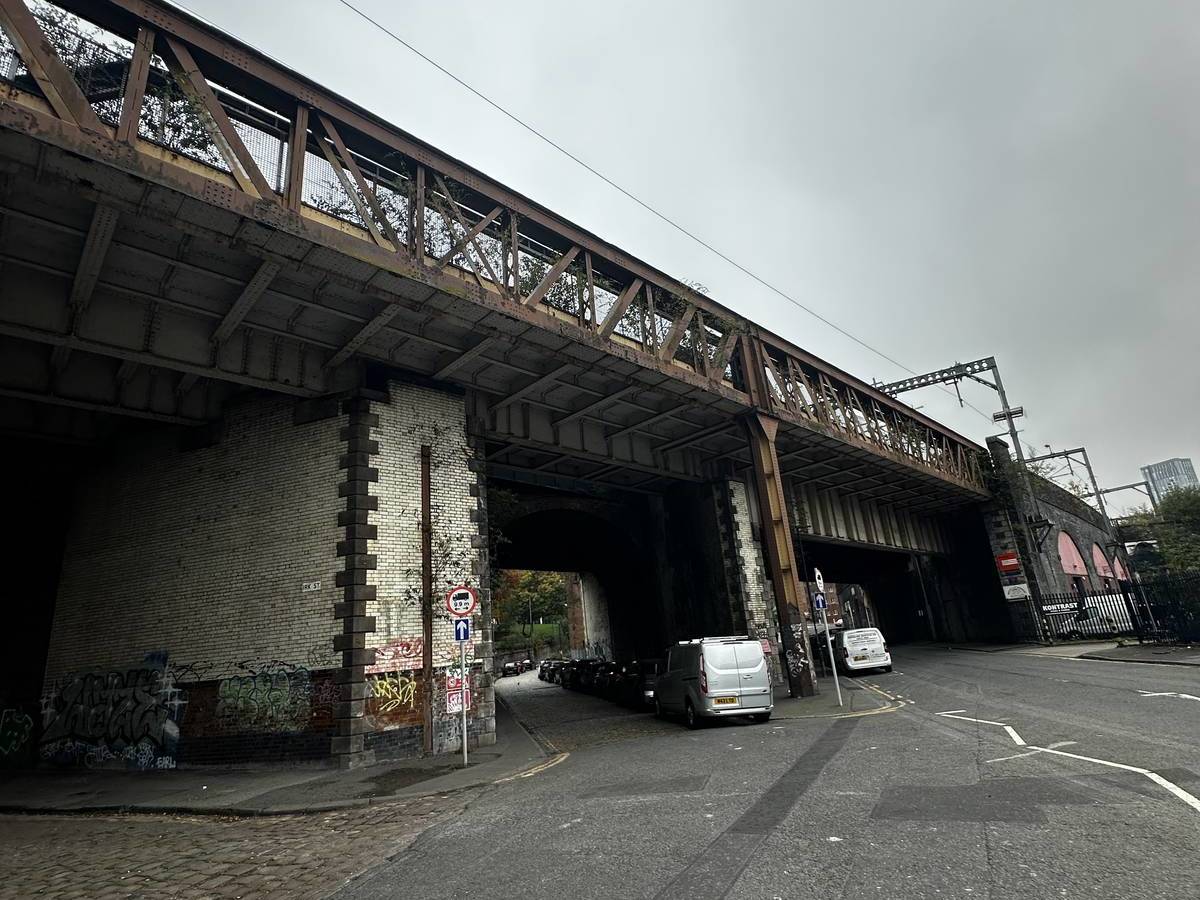 Credit: Emmeline Banks/Secret Manchester
Credit: Emmeline Banks/Secret Manchester
The potential of the area is quite stark, and by introducing creative venues and communities, Red Bank is already showing how it can respect the past whilst always looking to the future – and proves how many love the area.
Red Bank new developments 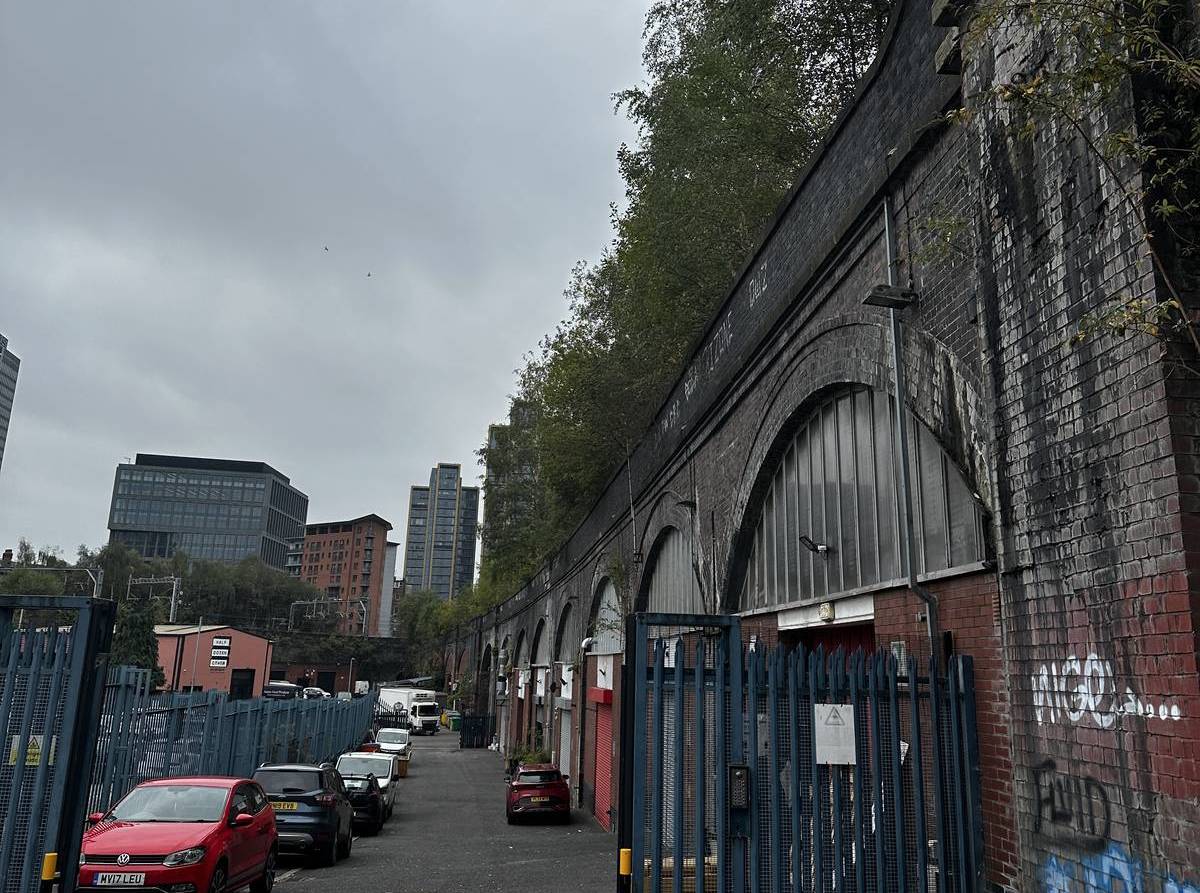 Credit: Emmeline Banks/Secret Manchester
Credit: Emmeline Banks/Secret Manchester
There’s a pretty impressive plan for Red Bank now, though, going further than your average redevelopment. Taking much of the disused, brownfield land that litters the Red Bank area, from warehouses and railway arches, to Grade II listed bridges and previously derelict land, plans for the development of the area have been underway for eight years already, but by the end of the project, the collaboration between Found and Manchester City Council will see Red Bank become one of the most desirable locations in Manchester – with an appreciation for its past, and thought put into the existing community.
In the coming years, not only will Red Bank be a great place to live, but it will also be bursting with open green space, an elevated New York style high-line, parks and the river, all on your doorstep. Right now, it’s already home to some of Manchester’s most popular places to eat, drink and socialise, including nationally recognised The Spärrows and local favourite Half a Dozen Other.
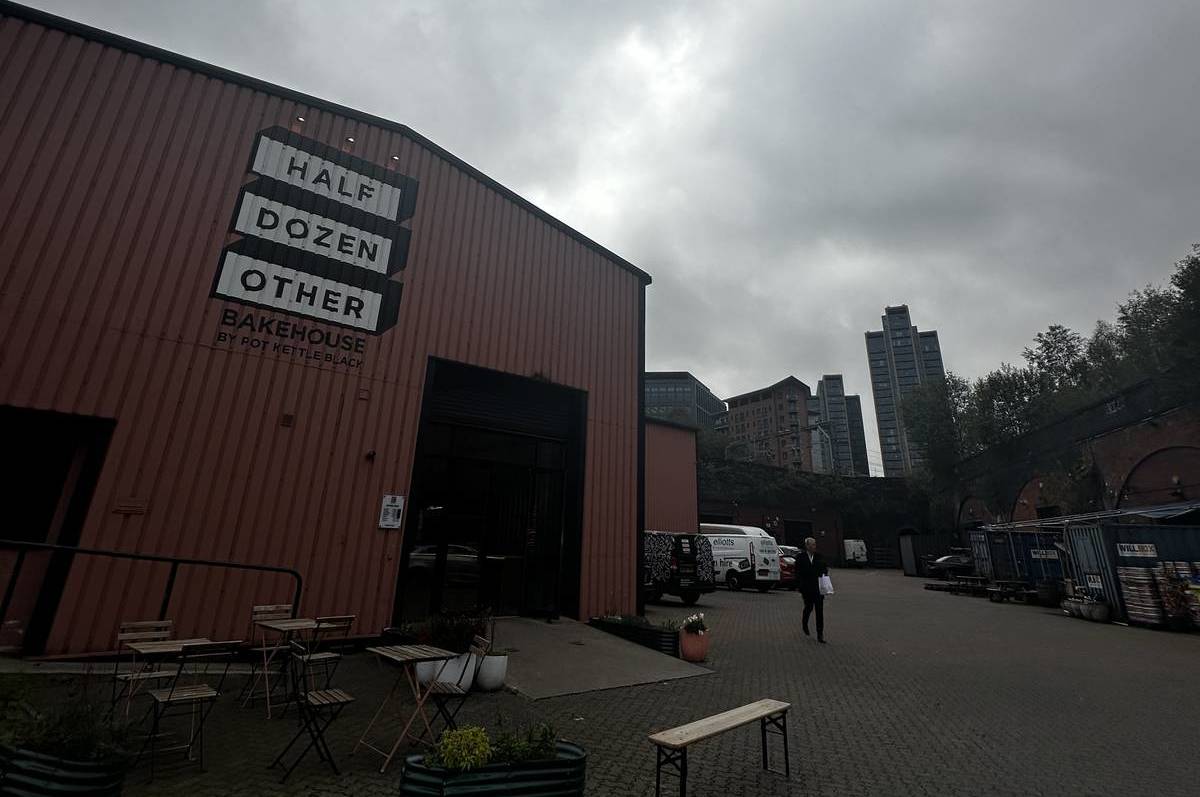 Credit: Emmeline Banks/Secret Manchester
Credit: Emmeline Banks/Secret Manchester
At the heart of the redevelopment are the ultra modern high rise developments off Dantzic Street, that make up Red Bank Riverside: Park View and Crown View. Not only will the development bring rental and owning opportunities for residents, but a commercial offering, providing the all-important Red Bank community with everything they need – including shops, medical services, beauty salons and venues for events and socialising.
The iconic River Irk will also play a large part in the new era of Red Bank, as it has for so many centuries. Eventually, the ‘Riverside’ development will clean up the bank and the water itself, allowing a luxurious promenade and viewing platform to come to fruition. Found will collaborate with Copenhagen-based architects Briq throughout the project, who will provide expertise on urban living, evoking a clean, Scandinavian style of living – could Red Bank become Little Copenhagen?
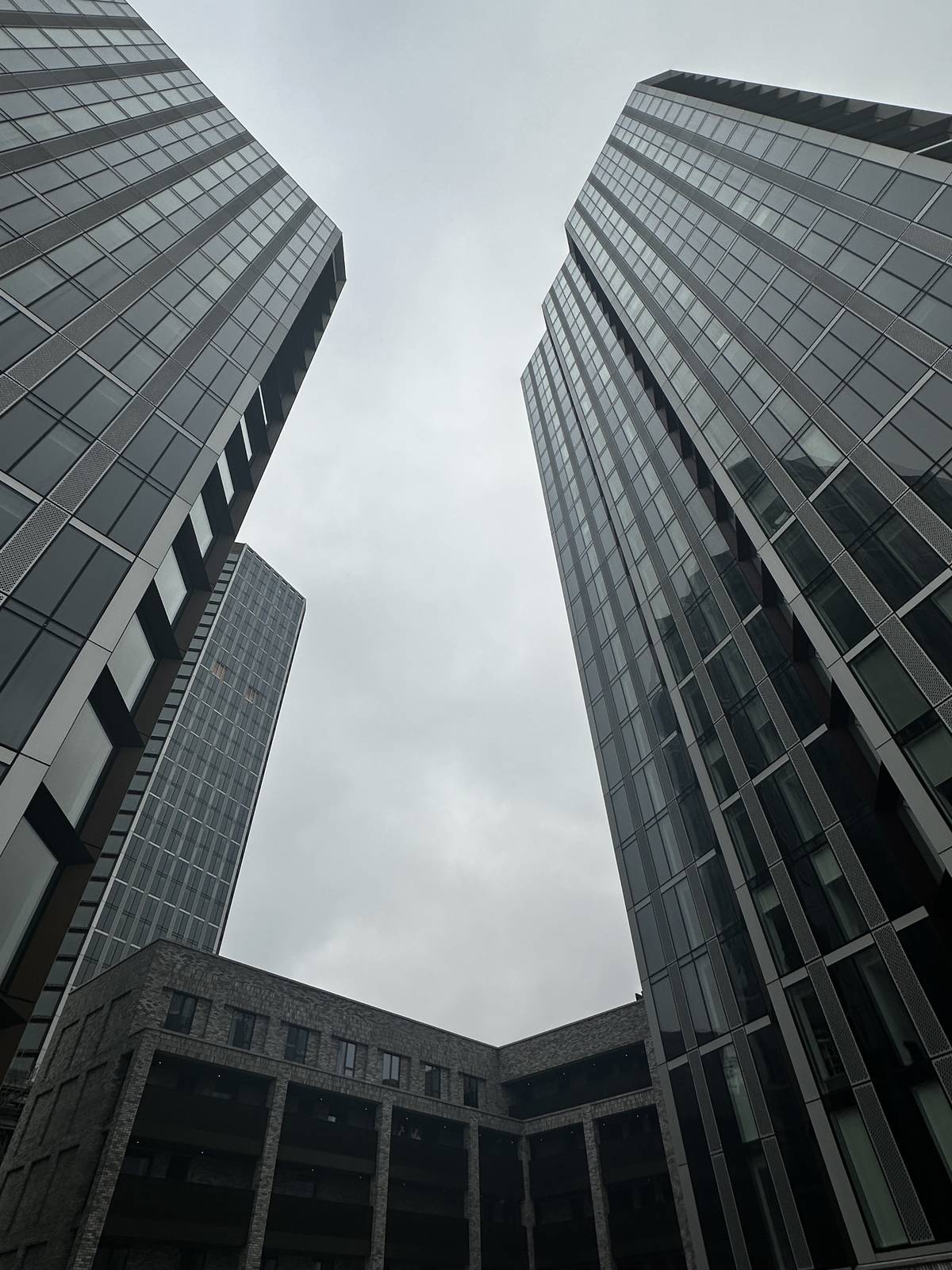 Credit: Emmeline Banks/Secret Manchester
Credit: Emmeline Banks/Secret Manchester
Coming away from the hustle and bustle of the city centre, the Red Bank development will link up surrounding areas, creating a purposeful, landscaped, lit path from the Victoria area, through Red Bank and the neighbouring St Catherine’s wood, to Collyhurst Village, looping back along the yet-to-be-developed Red Bank high line.
Collyhurst Village 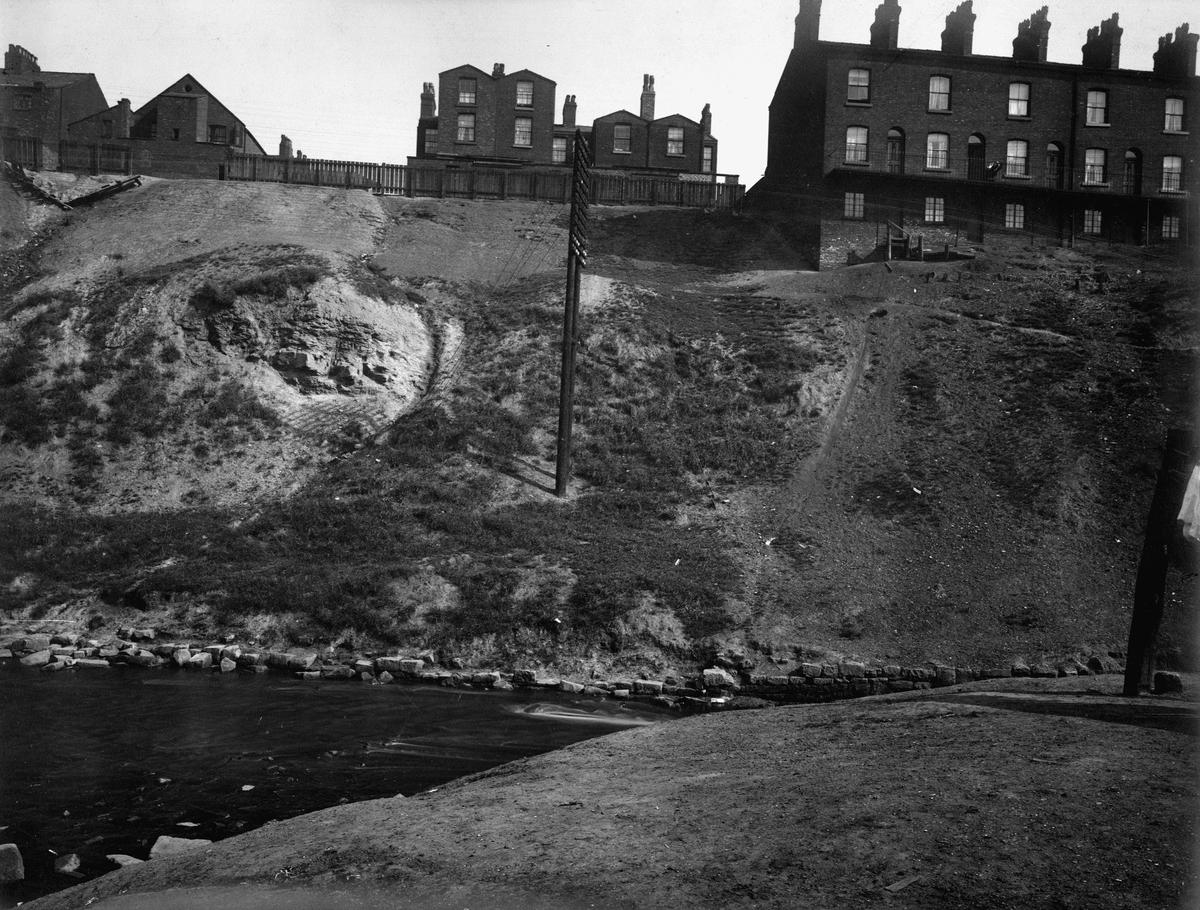 Collyhurst, Collyhurst Road, Backs of Houses 427-433, 1900 | Credit: Manchester Libraries under Creative Commons/CC BY-NC-SA 4.0
Collyhurst, Collyhurst Road, Backs of Houses 427-433, 1900 | Credit: Manchester Libraries under Creative Commons/CC BY-NC-SA 4.0
Centred around a brand new park, the new Collyhurst Village neighbourhood is the definition of a proud Mancunian community. Just a 20-minute walk from the city centre, the village is a collection of homes, retail and leisure facilities, brought to life by the close-knit community that calls the neighbourhood home.
There is a choice of schools and a range of transport connections, including the Metrolink and regular buses – for when you don’t fancy the walk. In fact, a new Metrolink stop will be created around Sand Street, between Red Bank and Collyhurst.
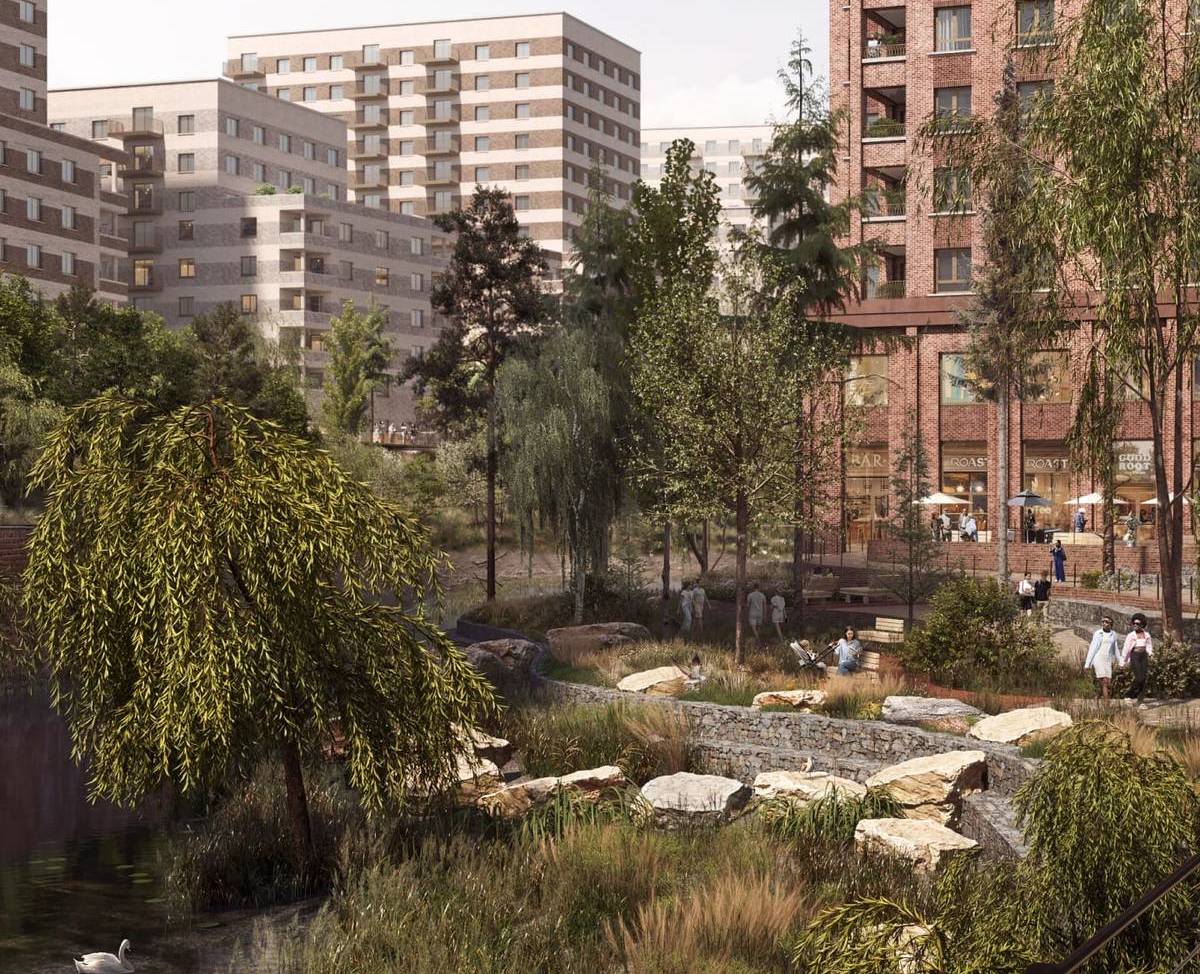 Credit: Red Bank Riverside
Credit: Red Bank Riverside
Developers also say the existing Collyhurst community will be offered replacement homes within the new development, including plenty of affordable housing.
To read more about the redevelopment of Red Bank, and its surrounding areas, visit the Found website, or the Red Bank Riverside website.
